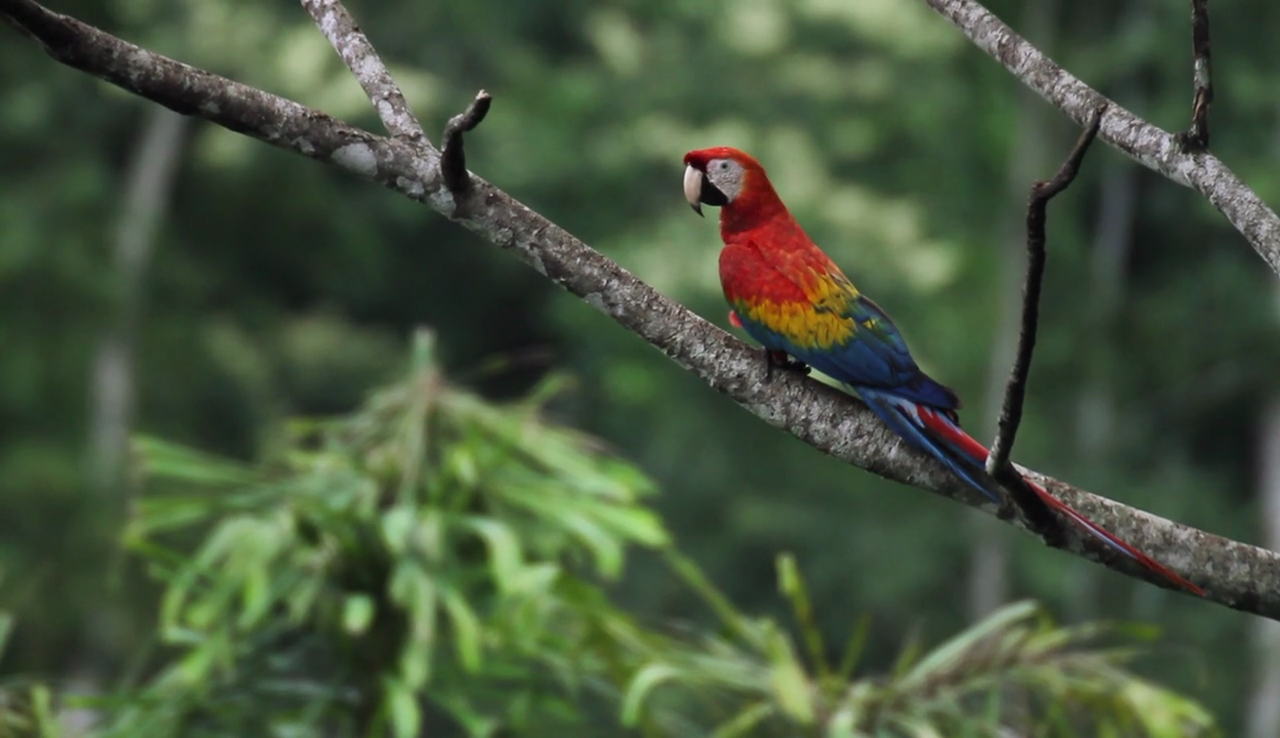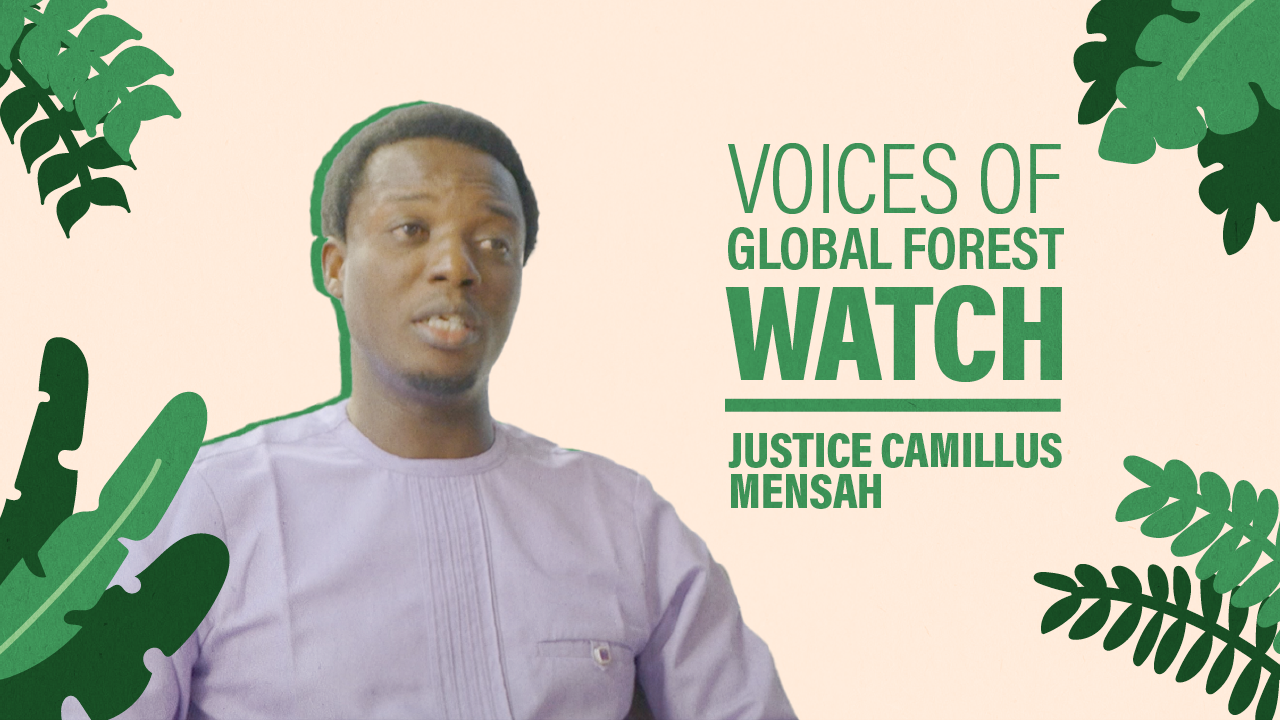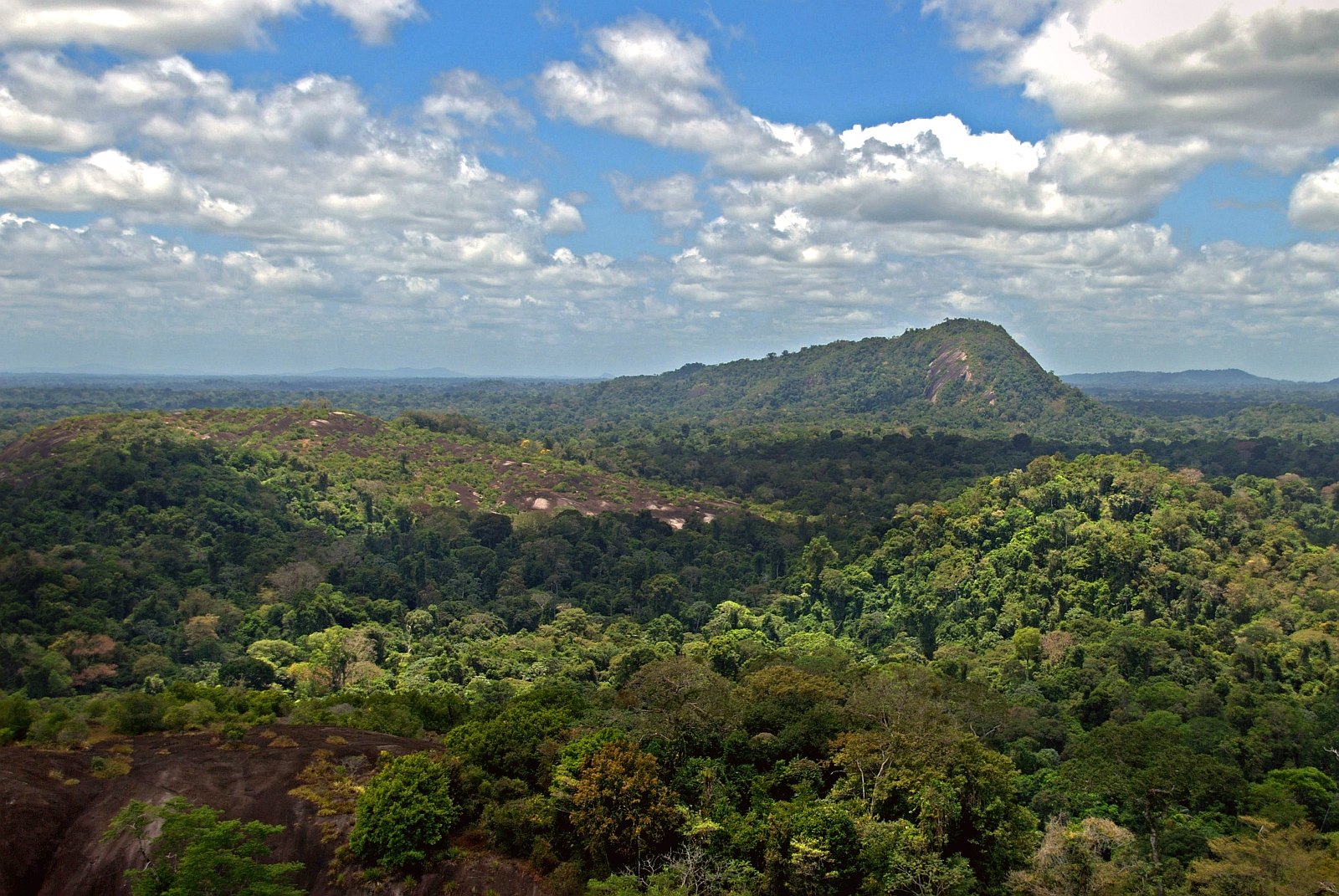- People
Macaws, Movies, and a Legacy of Environmental Protection: Q&A with Dr. George Olah, Part 1

Read part 2 here.
So, how did you get into researching macaws and other parrot species?
When I was doing my masters studies in zoology in Hungary, some people got interested in apes and became primatologists, others became herpetologists working with lizards and amphibians, I was really interested in birds in general—specifically in parrots. It’s a very interesting group for several reasons. They’re beautiful to start with. They’re also a very intelligent species; compared to other bird species they have a much larger brain compared to body size, so they have interesting cognitive abilities and social systems.
I was really struck, when watching the film, by the close-ups of these birds. When you see their eyes they are so curious and intelligent. I guess this would be a good place to introduce the birds you were studying.
 Macaws have a large brain compared to their body size. Photo by Wildlife Messengers.
Macaws have a large brain compared to their body size. Photo by Wildlife Messengers. I was looking at two species for my PhD: the Scarlet Macaw (Ara macao) and the Red-and-green Macaw (Ara chloropterus).
These macaws, and almost all parrots, have very interesting social traits. They partner for life, although we do observe some divorces and getting back togethers in Tambopata with specific couples. They share the duties of raising offspring. The female incubates the eggs and stays with the chicks and the male is relied upon for survival, bringing back and regurgitating food. Once the chicks fledge the nest they stay with the parents for a year and learn where to find food, then later on the youngsters form small groups together.
Like teenagers?
Exactly. Sometimes they stay with the parents and help raise the next year’s chicks. At the age of seven they couple up and start laying eggs—the first years aren’t always successful, but they learn and become more experienced and they live a long time. We have some records from captivity showing they live more than 60 years.
So, you were studying the genetic differences between two different macaw populations—one near the Tambopata research station, and another, further up the river in the remote Candamo Valley. The film centers around the expedition you took to the second research site in Candamo. Where did the idea to film the expedition come from?
The filming started during my PhD years. The idea was to record what scientists really do in the field. One of my colleagues, Dr. Cintia Garai had experience in filmmaking and was also a field biologist so she helped, because when you do the research yourself—all of the logistics, data and sample collection—you don’t have time to do the filming, and especially filming of yourself. We had so much material from those days that we got the idea to make a documentary. We started a crowdfunding campaign to make our first film called The Macaw Project. The half hour movie was made thanks to supporters from around the world. It was a really good feeling that people cared about these things. During the last stages of production for The Macaw Project we got extra funding from the Hungarian Media Council to invite some professional filmmakers to join us for an expedition to Candamo, and this is what The Macaw Kingdom is about.
And the film shows some breathtaking moments from the expedition. What were some of the most exciting—or terrifying—parts of the expedition for you?
Well one thing that was visible in the film was navigating the river. There’s no other road to move through the jungle, fortunately, so to get to these study sites, the river is the only way. When I first started my research in that region it was so scary to get through the rapids and water sections. Every time you feel that adrenaline when you go through it and think “oh my god you could lose the whole thing.” And not just the equipment but the invaluable scientific samples.
![[OPTIONAL DESCRIPTION]](https://content.globalforestwatch.org/wp-content/uploads/2019/09/boat_edited.png) The water level of the Tambopata River can fluctuate hour by hour, making it difficult to navigate. Photo by Wildlife Messengers.
The water level of the Tambopata River can fluctuate hour by hour, making it difficult to navigate. Photo by Wildlife Messengers. Not to mention your only mode of transport back down the river.
Exactly. So one of the big excitements for each trip is to actually get to the research site.
Another is when you are in Candamo you are in a place where almost no one has gone before. Not even native tribes have lived in the valley it’s so remote, so there’s this feeling of being in the middle of nowhere. When I climb a tree and I’m in a nest collecting data I can look around and see the landscape for hundreds of kilometers is just forest. The closest Amazonian city is days away.
And not only are you one of the first to visit this place and the first to conduct research there, you’re also the first human many of the animals in Candamo have likely ever seen. That became important in the film when you had an unexpected visitor to your camp site, right?
Yeah. One of the nights inside Candamo, we had our camp set up around our gas-heater kitchen and had cut a trail into the forest for a bathroom. The film’s director, Attila David Molnar, was heading to the bathroom that night when he called to me and said, “I think there’s something in the forest.” I went to check it out and shined my flashlight and there’s a jaguar sitting there on our bathroom trail.
 One night of the expedition, a curious Jaguar visited the campsite. Photo by Wildlife Messengers.
One night of the expedition, a curious Jaguar visited the campsite. Photo by Wildlife Messengers. Just sitting there?
Yep. We called the other team members and started to whisper to each other and brought out the camera to record. But after a few minutes passed it was still sitting there looking at us and we realized, it’s not just going to go away. It got a bit scary then.
Do you think it was hungry?
Well its main prey is the Peccary, the forest pig, and they have a pattern to how they hunt. They have to chase. Seeing us with all those flashlights and strange smells was so far outside of its “prey” concept—especially having never seen a human before. It was just really curious. And not afraid because it didn’t know it should be. But we were getting afraid because it was coming closer. We didn’t have anything to defend ourselves so we just started to clang the cutlery and the metal plates. It stopped, but didn’t run away. It was really only one jump from any of us. We started guarding the toilet path after that.
Sounds like collecting the field samples can be adventurous. In the next installment, Olah will discuss what they found when the team returned to the lab and analyzed the samples.
Read part 2 here.


